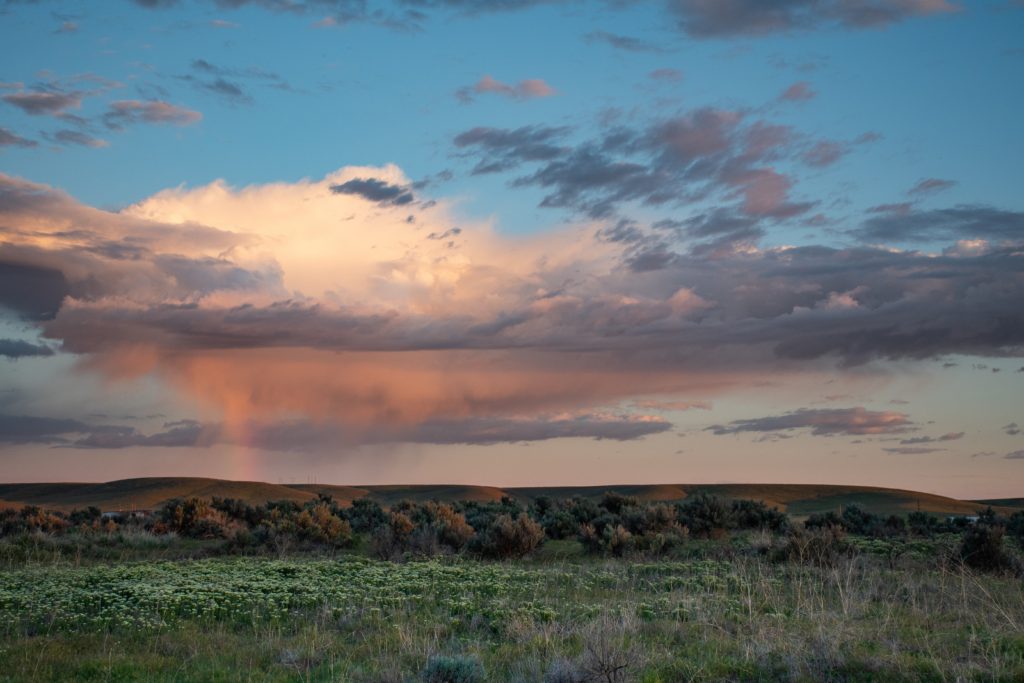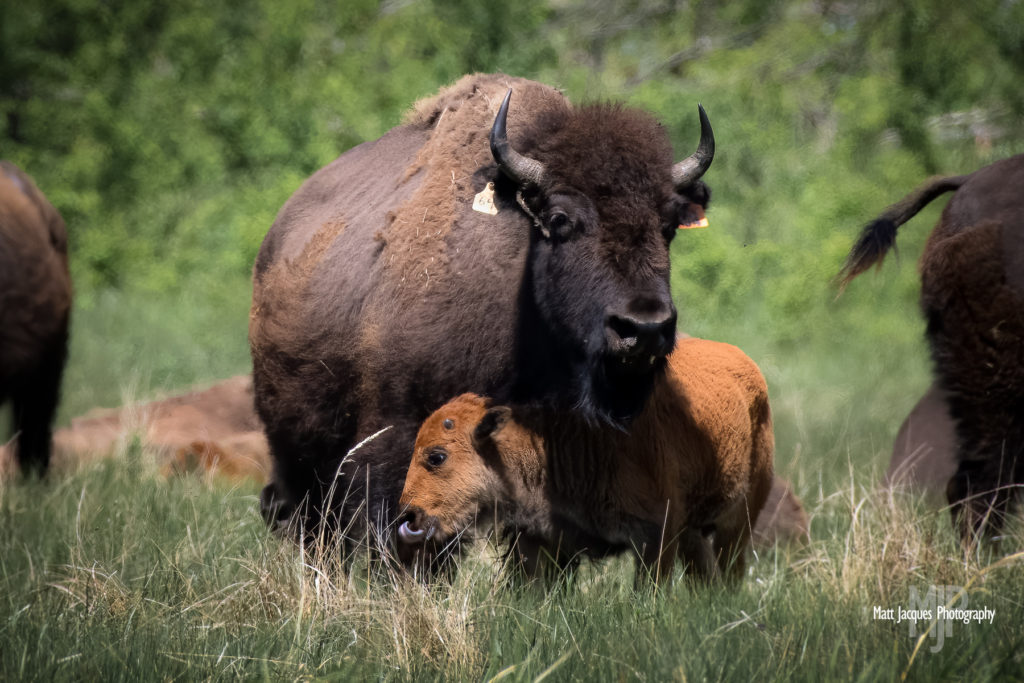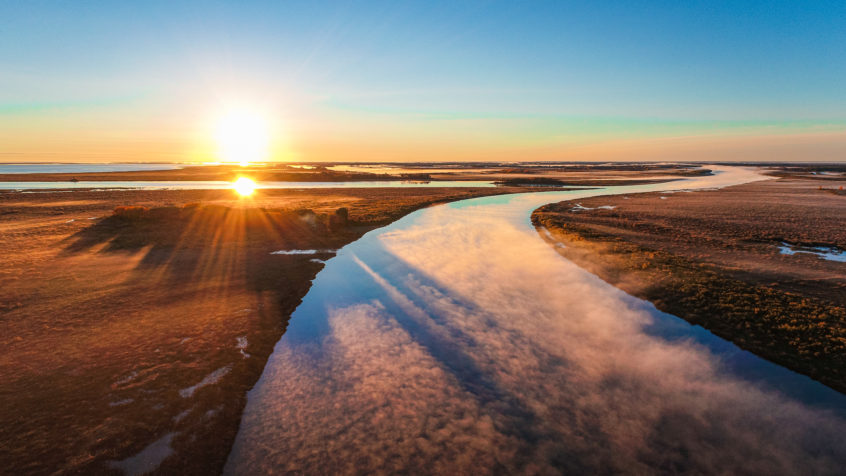By Esprit Farmer
Our society and the natural world are linked in so many unfathomable ways. Because of this, every action, big or small, has an effect on the natural world around us, in turn shaping our relationship with nature. This is especially true in Saskatchewan, where our economy, food, and social structure are tied inexorably to the Saskatchewan Rivers.
Before embarking on any project, especially one that will affect the whole province and beyond, it is important to consider the wide-spread, long-term impact of what we do. This involves not only considering the environmental impact, but also the social impact of our actions. In order to do so, we must first understand who and what is directly affected.



In the case of any major development along the shores of the South Saskatchewan River, we must consider: the grasslands that will be removed, the Saskatchewan River Delta downstream, and the Indigenous communities that rely on the survival of these habitats for their physical and spiritual wellbeing.
The Power of Saskatchewan’s Grasslands
While they may not look like more than a canvas for our gorgeous sunsets at first glance, grasslands hold a wealth of power. Without us knowing it, grasslands’ subtle talents shift our everyday lives, and the province would look very different without them.
Did you know that grasslands act as a massive carbon sink? This means that they absorb harmful greenhouse gasses from the atmosphere and store them for long periods of time, where they cannot contribute to climate change. In fact, the soil harbours more carbon than plants and animals combined. Because of this, it is paramount that we protect our remaining grasslands.
74% of Canadian grasslands are already gone.
As a province known for its rivers and lakes, citizens of Saskatchewan must be aware of the risks posed by flooding. Water moves through Saskatoon at a rate of 400m3 per second, and heavy rains are enough to increase this to the point of flooding and erosion.
Luckily, Saskatchewan is home to an untold hero. Grassland plants like fescue grass have very deep roots. These are absolutely necessary for stopping both flooding and erosion. Grasslands have a massive water storing capacity, which not only reduces the amount of water during a flood, but also slows the runoff speed, making the water flow more manageable. As well, these deep roots keep the soil compact and in place, which curbs erosion. While wild grasses may not look like much from the surface, they are working miracles underground.
Biodiversity is a cornerstone of our ecosystem. Having a larger number of species means a stronger food chain. As a result, animals are less likely to starve in difficult times because they have more options for food and disasters are less likely to wipe out a species because they become more resilient with more individuals. Globally, we are currently on the cusp of a sixth mass extinction. Because of this, biodiversity must be nurtured and protected now more than ever.
Grasslands are home to a diverse range of animals: from eagles to frogs, gophers to bison, each animal plays an important role in the ecosystem. Moreover, grasslands are home to many endangered species: the loggerhead shrike, Ord’s kangaroo mouse, the swift fox, sprague’s pipit, muskrats, piping plover, leopard frogs and burrowing owls, just to name a few. All of these animals call grasslands home, and their habitat is quickly shrinking.



When considering the importance of animals in the grassland habitat, it is important to recognize those who hold the strongest connection to our province’s nature: Indigenous Peoples. For them, the earth acts not only as a provider of food and shelter, but also as a spiritual force. This is expressed through their connection to the animals that roam the plains, like bison. Bison, once almost completely eradicated, hold the key to Indigenous reconciliation to the land. This is not possible without our grassland ecosystem.
The Saskatchewan River Delta and All It Holds
What happens upstream will surely affect whatever is downstream in ways we cannot imagine. This is especially true in nature, where one even tiny action can change an entire ecosystem. Because of this, we must travel down the Saskatchewan river, to an ecosystem that is ever so important: the Saskatchewan River Delta (SRD). Located close to the Manitoba border, the SRD is often overlooked in decisions involving our rivers. This is a perilous mistake because of the ecological and social significance of this area.
The SRD is Canada’s largest inland delta, and one of the largest wetlands in the world. This is incredibly significant from a climate change perspective: the SRD acts as a massive carbon sink, and its disruption could cause a huge release of greenhouse gasses. It is also key for biodiversity: the SRD is an internationally recognized Important Bird site, as it provides habitat to half a million waterfowl a year. It is also home to many endangered species, ones that during a mass extinction we can’t afford to lose.
Click here to read about the Saskatchewan River Delta’s nomination for Ramsar designation.
The Saskatchewan River Delta is also the spiritual and cultural home of Cumberland House Cree Nation, along with other First Nations and Métis in Saskatchewan and Manitoba. These communities rely on the River Delta for food, housing, and a spiritual connection to the earth that cannot be overlooked. Already feeling the effects from the E.B. Campbell dam upstream, Cumberland House has reported decreased water quality, volatile water levels, and dieback of aquatic life. Any new projects upstream would only serve to accelerate the environmental damage they are facing.
Environmental Concerns
The Lake Diefenbaker irrigation plan focuses on diverting water from the South Saskatchewan River to nearby farmland. While farming is incredibly important for Saskatchewan’s food system and economy, it is important to first consider any potential harm that may come.
This project involves turning what is now a grassland into farmland. By removing this grassland habitat, our province loses all of the benefits listed above: carbon sequestration, flood protection, and biodiversity. These are all things that we are struggling with globally, and removing more of this precious habitat is harmful. Moreover, there is the consideration of placing cropland within a grassland. Invasive plant species, such as phragmites, are brought in by farming operations and degrade natural grasslands.
The Saskatchewan River Delta will be greatly impacted by the irrigation project. Irrigation has a huge impact on the operations and biodiversity of the river and the wetland that it feeds. Diverting massive amounts of water will decrease the water levels downstream, increasing dieback and erosion.
There is also the impact of the used irrigation water that is reverted to the river, both intentionally and through groundwater and runoff. Conventional farming techniques employ pesticides and minerals (like phosphate) to increase crop yield. These upset the natural balances of the water, like the pH, and can lead to defects and illness in fish and aquatic creatures. Once reaching the river, these chemicals can be spread for long distances, affecting the entire river habitat.
This is especially poignant given the biological importance of the river delta. With so many endangered species living there, the consequences of a volatile habitat will be disastrous. We must also consider the people that need the river delta. Cumberland House Cree Nation already suffers from changes to the Delta, and an extra project, if not properly managed, would amplify these challenges. There is also the consideration of those further downstream, and in Manitoba, who are directly affected by our actions upstream.
Ultimately, we need to remember that our water systems are all connected. For too long we have neglected to consider our downstream neighbours when making agricultural and industrial decisions, to the detriment of one of our most irreplaceable ecological gems.
Learn more about the Saskatchewan River Delta here, and stay tuned for further updates on the conservation of the Delta.

